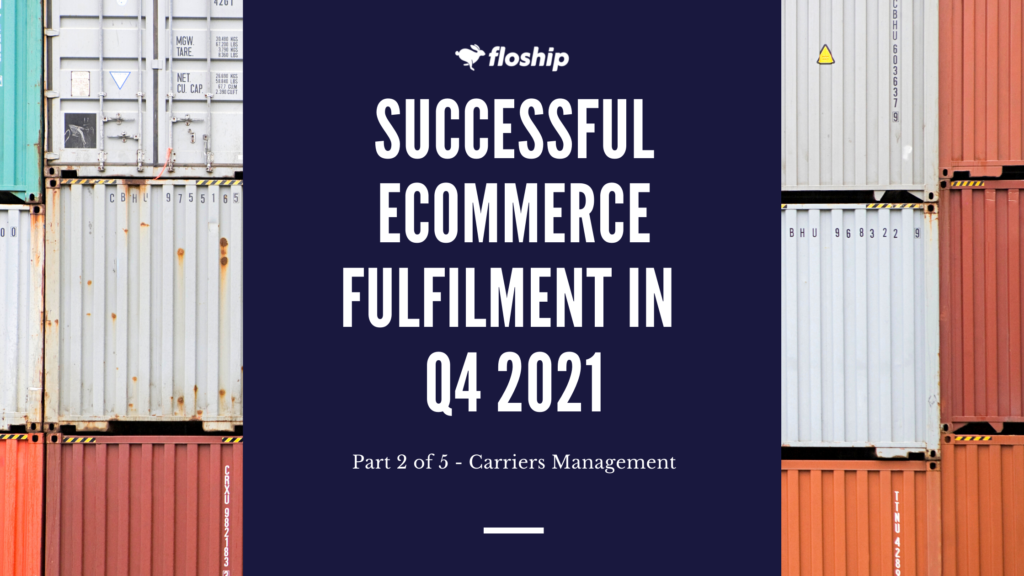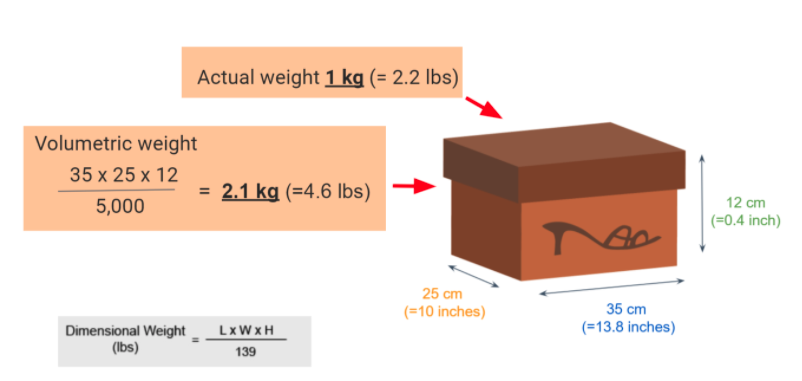Understanding how carriers work is pivotal to successful Q4 ecommerce fulfillment, managing its delivery times – and setting up the right expectations
Let’s start with a quick refresh of the main types of courier services and the date before they can’t guarantee a delivery by Christmas.
3 MAIN COURIER SERVICES
POSTAL
Postal carriers, like USPS, Hong Kong Post, or Australia post are responsible for delivery in your domestic country. When shipping cross-border, postal carriers collaborate through a network called the Universal Postal Union (UPU). The UPU is the reason why you would receive a parcel by USPS that was sent by Hong Kong post. It is important to note that postal carriers do not own aircrafts. Instead, they hold contracts with both passenger airlines and air freight carriers for air transport of mail and packages. In addition, they usually use the standard customs clearance. Historically, they are the slowest cross border delivery mode due to three factors:
(1) An elongated supply chain that involves multiple third party actors
(2) Customs clearance time, and
(3) the minimal number of daily uplifts dependent on commercial and freight availability
Last Date postal carriers guaranteed a Christmas delivery last year:*
- USPS domestic: 17th-18th of December
- Cross-border shipping (China to the US): 1st of December
EXPRESS
Express carriers, like UPS, FedEx, or DHL, have worldwide hubs, own their own fleet of airplanes and continually expand their network by through partnerships with third-party carriers.
This allows them to take end to end ownership of your deliveries from the warehouse to the customers front door, and because they own the whole supply chain, express carriers are able to offer same-day delivery for domestic markets, and 1-3 days delivery dates globally.
Dates before which express couriers do not guarantee a Christmas delivery before:
- Domestic delivery: 20th-21th of December
- Cross-border shipping (China to the US): 17th-18th of December
CONSOLIDATOR
The third type of carrier – specifically for cross-border shipping – is called “consolidators”. This type of solution, also known as direct injection, works the following way:
Step 1: consolidation of the multiple single packets into a bulk,
Step 2: shipment as a bulk,
Step 3: de-consolidation from bulk to single parcels,
Step 4: customs clearance of single parcels – benefiting from section 3.21 clearance in the US for instance – (5) handing the parcels over to the national postal carrier for last-mile delivery.
Dates before consolidator carriers do not guarantee a Christmas delivery before:
- No domestic shipping for consolidator carriers
- Cross-border shipping (China to the US): 5th of December
Please note that the dates mentioned above are generalized based on a panel of carriers. They shouldn’t be taken as definite and Floship will not bear the responsibility for any discrepancies.
BEST PRACTICES
Now that we have grasped the timelines, I would like to share with you 5 recommendations I offer my clients especially for Q4 but also as a year round rule of thumb
FIX YOUR SHIPPING OPTIONS MAPPING
There will be delays in this Q4 and you need to be ready if you don’t want to sacrifice your brand’s reputation so earlier preparation leads to lower errors and better error management.
We recommend planning out three key shipping solutions options categorized by:
- Destination country – Different carrier has competitive advantages based on the destination country/region (e.g. Aramex for Middle East, HK post for South East Asia, FedEx for the US, DHL for Europe)
- SKUs – number of items per order
- Volumetric weight – for example, there are more shipping options when your product is under the 2kg volumetric weight range
For every shipping solution, it is advised that you have a back-up plan. Backlogs, orders stuck, lost and no uplifts are just some of the issues that can arise during a peak season. Having the backup option enables you to seamlessly transition to another carrier if any of those issues arise.
The thoroughness of this planning allows you to then offer greater shipping options at checkout. Managing free shipping versus paid shipping is another solution to better manage your shipping times. Some customers will definitely be happy to pay more to guarantee a Christmas delivery. 3 or 4 shipping options are even considerable, offering as many choices as possible to the buyers.
OPTIMIZE YOUR PACKAGING
With a primary goal of increasing the AOV, creating new SKUs from bundling, exploring alternative shipping methods and packaging solutions are understandable. However, it is crucial to understand that all third party vendors, including 3PLs and carriers get busier in Q4, and operating times and SLAs get longer.
Thus one of the pitfalls of trying out new SKUs and new types of packaging before the peak season, without having enough time and shipping data to prove that the shipping costs estimations provided by your 3PL are optimized against cost.
Although postal couriers will often take into consideration the actual weight, express couriers and consolidators take into consideration the volumetric weight (or in some countries, dimensional weight). The way to calculate it is L x W x H cm / 5,000; In the US, it is L x B x H inches / 139.
weight differences between actual weight & volumetric weight
For cross border shipping, cardboard boxes are a good way to have control over your volumetric weight. On the other hand, other types of shipping packaging like polybags, bubble mailers leave a lot of room for volumetric weight variations. Depending on how people in the warehouse pack it, or depending on how couriers measure the packages, shipping prices will fluctuate a lot. Therefore, it is crucial to test your packaging to find the optimal volumetric weight and shipping cost before you hit Q4.
However, this impact would naturally be not as important in cases of domestic shipping, as the variations are less important.
TEST YOUR PARCEL TRACKING
Parcel tracking management is a key element of a successful Christmas campaign. Whilst delays are inevitable, it is imperative for customers to have regular updates of their parcel delivery. On one end of the spectrum, express couriers usually have excellent tracking. However, for postal and consolidators, it is critical to review their parcel tracking process before committing to their shipping services. Some of the challenges often happen when the parcel reaches the destination country, where either (1) tracking only gets updated at this moment, or (2) as the parcel is handed over to another company, you lose track of the parcel. A tracking and well-tested can prevent those challenges.
SET REALISTIC CUSTOMER EXPECTATIONS AND LEVERAGE EXPRESS SHIPPING
Based on the shipping deadlines explained earlier, be transparent with your customers. Ensuring this information is present in multiple locations in your website (banner, shipping page, buying page) will be crucial in managing their expectations and limiting miscommunications.
To maximize your sales, make the most of the express network. This way, you will be able to ship until the last minute, both domestically and internationally. It is common practice to wait for the last minute for its Christmas gifts, and shipping prices are less of an issue when in a rush. The time difference between postal carriers’ last delivery date guaranteed for a Christmas delivery and Express couriers’ one is 2 weeks when it comes to international shipping, which represents a non-negligeable profit.
FIX YOUR CUSTOMS AND DUTIES
The most common incoterms when shipping in eCommerce are DAP (called DDU – Delivered Duty Unpaid – in the past), where customers pay for all duties and taxes, and DDP (Delivered Duty Paid), where the seller pays everything upfront. As duties and taxes are already paid, DDP shipping is often faster, as customs do not have to get in touch with the final customers to collect taxes. This might be another way to reduce lead times while increasing customer satisfaction.
HOW FLOSHIP CAN HELP
As a cross border logistics company, Floship’s global network and consulting teams are to built to leverage our 50+ international carriers and warehouses in 3 continents to ensure our ecommerce customers find the quickest and most competitive route from the factory to the customer in 180 countries and 250 regions.
Does your current 3PL provide provide you with the best shipping, packaging and consulting services to maximize the efficiency of your ecommerce fulfillment? Speak to a Floship consultant on how we can!

Ready To Upgrade Your Logistic Solution?
Speak to Floship ecommerce logistic consultant about improving your global support chain today






